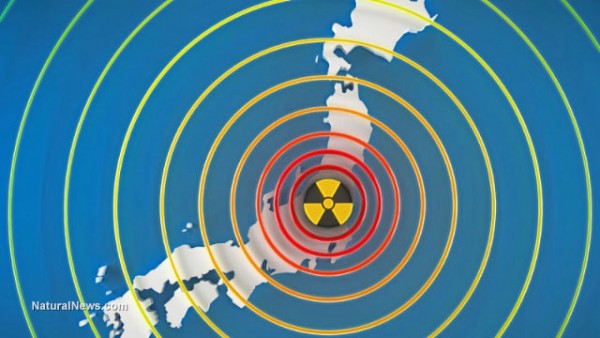Radiation levels peak at Fukushima power plant
10/30/2015 / By Greg White

More than four years after the Fukushima disaster, radiation levels in the area still continue to spike. The Tokyo Electric Power Company (TEPCO), the company in charge of the power plant, announced Thursday that radiation levels as high as 9.4 sieverts per hour were detected outside a reactor containment vessel at the Fukushima No. 1 nuclear power plant.
Exposure to the maximum amount of radiation will result in death. TEPCO anticipates the decontamination process to take at least a month.
Checks made from September 4 to 25 discovered the lethal radiation levels at a cell that includes a pipe attached to the containment vessel of reactor 2 at the power plant, which was crippled by a tsunami in 2011.
TEPCO initially planned to begin investigating the containment vessel with a remote control robot in August; however, high radiation levels encumbered the investigation.
Extremely high energy levels, coupled with an inability to locate the missing nuclear fuel, have made it impossible to estimate how long it will take to decommission the entire power plant.
Radioactive plume peaks by end of year
Unfortunately, that’s just the tip of the iceberg. Following the Fukushima disaster, a hydrogen explosion rocked the power plant, which unleashed a plume, or radioactive smoke, into the environment. According to a study released last year, nuclear fall out from the power plant should reach its peak by 2015.
The study was published in the journal Proceedings of the National Academy of Sciences (PNAS), which focused primarily on the radioactive isotope cesium-137. This is the longest living isotope released into the environment by the catastrophe. Most of the cesium-137 that continue to cloud the air can be traced back to nuclear fall out in the 20th century.
The reverberations of the plume have had an adverse impact on the neighboring environment. For instance, Japanese macaques (Macaca fuscata) were shown to have abnormally low red and white blood counts, which could compromise their immune system. Pale grass butter flies around the area were also found to have developed slower than usual, implying that radiation had stunted their growth.
Humans are by no means immune to the adverse effects of radiation. Just this month, a study was released which found thyroid cancer rates were 20 to 50 times higher for children living inside the Fukushima Prefecture than those outside.
Toxic cloud to blanket West Coast
The Fukushima site released cesium-137 into both the air and sea, which ocean currents have carried across the Pacific Ocean and are just now beginning to bombard the West Coast. Earlier this month, the first radioactive material from Fukushima was detected off the coast of Canada, according to a study published by the Woods Hole Oceanographic Institution.
The researchers detected cesium-134 at levels of 1.4 becquerels per cubic meter, and cesium-137 at levels of 5.8 becquerels per cubic meter. The becquerel is the derived unit of radioactivity in the International System (IS). After the Fukushima disaster, Japanese coastal waters contained 50 million becquerels per cubic meter.
Other studies predict that the main part of the radioactive plume will entomb the West Coast by the end of 2017 and early 2018. Some models suggest the radioactive debris will remain on the West Coast until 2026.
Radiation levels at the Fukushima power plant have only increased over the years, proving that TEPCO has no idea how to contain the disaster.
As radiation levels continue to leak, the company’s incompetence will continue to speak.
Sources:
Submit a correction >>
Tagged Under:
adversehealtheffects, Fukushima plant, radiationlevels, radioactive plume, toxicplume
This article may contain statements that reflect the opinion of the author
RECENT NEWS & ARTICLES
COPYRIGHT © 2017 FUKUSHIMAWATCH.COM
All content posted on this site is protected under Free Speech. FukushimaWatch.com is not responsible for content written by contributing authors. The information on this site is provided for educational and entertainment purposes only. It is not intended as a substitute for professional advice of any kind. FukushimaWatch.com assumes no responsibility for the use or misuse of this material. All trademarks, registered trademarks and service marks mentioned on this site are the property of their respective owners.




















